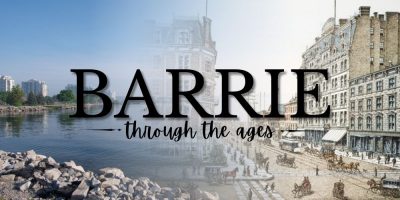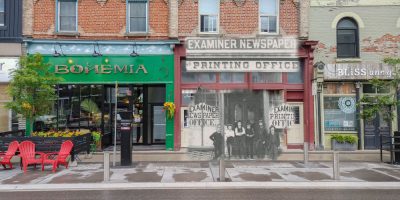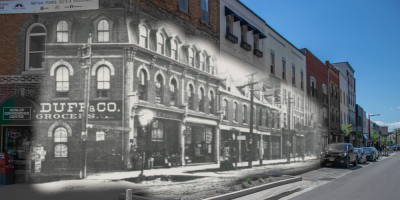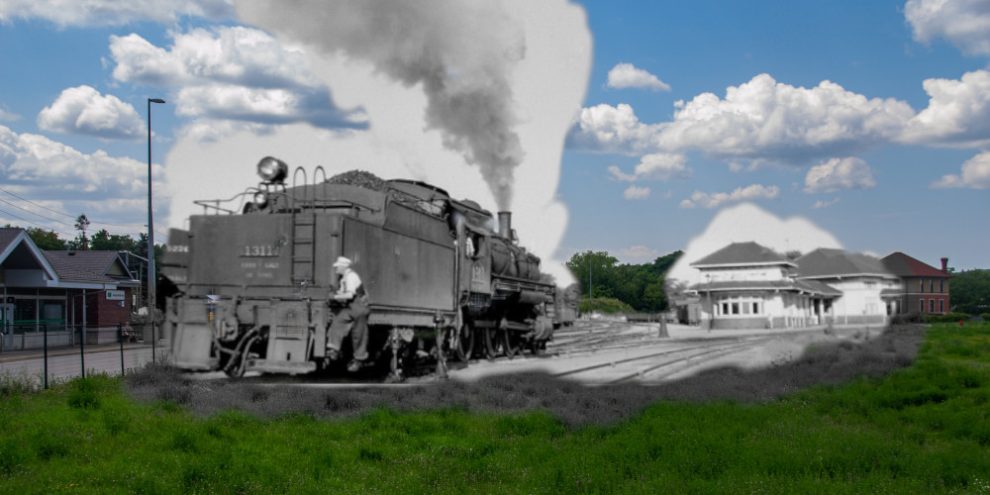
Before Barrie grew into the bustling city it is today, Allandale Station was already laying the tracks for its future. Built in 1853, the station played a key role in connecting the region to Toronto and beyond, but its story starts nearly two decades earlier with a bold railway dream and a lot of determination.
Join us as we uncover the captivating history of Allandale Station and delve deeper into Barrie's vibrant past.
Allandale Station was a small part of a larger plan
In 1834, talks began about building a railway that would go from Toronto to the upper Great Lakes and in 1847, Barrie's first newspaper, the Barrie Magnet, began advocating for a line from Barrie to Toronto. But it wasn't until 1948 that Frederick Chase Capreol, a businessman and railway promoter born in England, announced that he would run a line from Toronto to Collingwood.
After a failed attempt at raising funds through a lottery (that was shut down before it began), Capreol teamed up with Charles Albert Berczy. The pair chartered the Toronto, Simcoe and Huron Railroad Union Company on August 29, 1849 and began raising funds for the first 121 km. They knew that once they met this milestone, government funding would come available for the remainder of the line.
Barrie's News Delivered To Your Inbox
By submitting this form, you are consenting to receive marketing emails from: Central Ontario Broadcasting, 431 Huronia Rd, Barrie, Ontario, CA, https://www.cobroadcasting.com. You can revoke your consent to receive emails at any time by using the SafeUnsubscribe® link, found at the bottom of every email. Emails are serviced by Constant Contact
In 1850, the company was renamed the Ontario, Simcoe and Huron Union Railroad (OS & HUR). The following year, Capreol was fired as manager and on October 15, 1851 the OS & HUR marked the starting of construction with the official sod turning by Lady Elgin. The day was marked with a parade that was attended by 20,000. This was an impressive gathering considering Toronto's population at the time was 31,000.
By February 1853, the railway had started work on their first locomotive called "The Toronto." Weighing almost 30 tons, this was the first steam locomotive built in Canada. Months later, on May 16, the train began it's first revenue service pulling four cars to Machell's Corners, known today as Aurora.
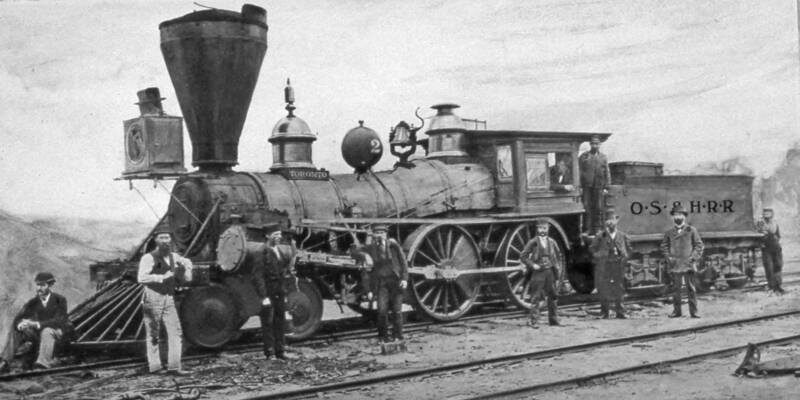
Work continued north to Braford in June and by October the Allandale Station had been built, in what was then known as Allandale Village. From there, the track headed west to Collingwood, by passing Barrie.
Expanding into Barrie
While the OS & HUR had plenty traffic, it was not very profitable and suffered ongoing financial difficulties. In 1858, following a government bailout, Frederick William Cumberland took control of the company and reorganized it under the name Northern Railway Company of Canada (the Northern).
To improve profitability, he cut trains with little traffic and resisted expansion of his lines beyond Collingwood. This decision left an opening for competition like the Toronto, Grey and Bruce Railway to expand beyond Collingwood, which began construction in 1869. Eventually, the Northern had no other choice but to face their competition head on. This led to the creation of the North Grey Railway in 1871 and an expansion line from Collingwood to Meaford in 1872.
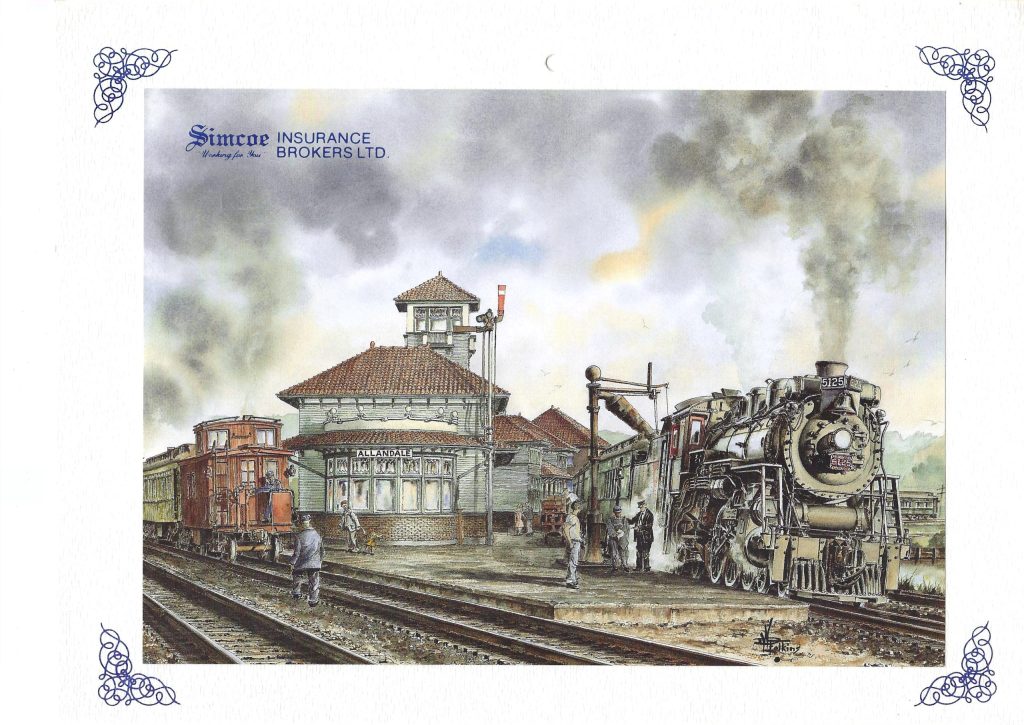
Have an image or story to share with Barrie 360? Share it here >>>
While all of this had been happening, tensions started to grow between the Northern and groups in Barrie who wanted the line to expand to the downtown area.
For two consecutive years starting in 1857, Barrie would try (and fail) to annex this important railway land from Allandale Village. It wasn't until 1865 that the dam finally broke and Barrie would receive its own switch at Memorial Square called Station Gore.
Continued growth
1869 brought further expansion with the Toronto, Simcoe and Muskoka Junction Railway (or Muskoka Branch), which ran north east from Allandale Station to Orillia and eventually onto Lake Muskoka just outside of Gravenhurst. By 1875, the Northern had officially absorbed the Toronto, Simcoe and Muskoka Junction Railway.
In 1878, the Northern further expanded with North Simcoe Railway, which split off west of Barrie to Penetanguishene.
In 1884, the brick building that replaced the old wood station in 1863, burnt down. At the time, Allandale was still it's own village divided from Barrie by Townline Street (today's Tiffin Street, named after William Richard Tiffin who was superintendent of the Northern Division of GTR). By 1986, however, Barrie had annexed the village of Allandale.
Changes in ownership
A year later, in 1887, the Grand Trunk Railway (GTR) bought a controlling interest in the Northern and by January 1888, the takeover was complete. A vital link in the development of Toronto, the station became the flagship of the GTR.
As the railway continued to expand, so did the area around Allandale Station. In 1903, the Master Mechanics offices (now known as the Southshore Centre) were raised. A new station was built by GTR soon after in 1905, followed by the Railroad YMCA building in 1907. In 1910, the Allandale Lawn Bowling Club opened.
By 1922, following GTR's bankruptcy, Canadian National Railway (CNR) had taken over Allandale Station. The station continued to be a major point of connection until the 1980s when the passenger depot and restaurant closed.
The station would briefly be used as a GO passenger facility from 1990 to 1993 before the Canadian National Railway lifted the rails between Allandale and Longford in 1996.
The station is currently a federally designated heritage railway station protected by the Heritage Railway Stations Protection Act.
If you want to learn more about Allandale Station and all of Barrie’s history, head over to the Barrie Historical Archives, Barrie’s online museum. It’s full of pictures, videos, audio, and documents spanning nearly 200 years and it’s completely free!
Be sure to check back soon for more in our Barrie Through the Ages series and we'll also be updating this interactive map so you can explore Barrie’s history yourself!
RELATED: Learn more about Barrie's history ...


